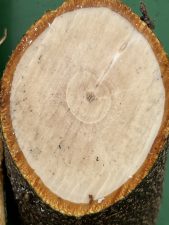
Functionality and Vitality of Pecan Tree Organs: Stems
My grandfather, Ernest “Tug” Nesbitt, lost the tip of one finger in a shop accident working with a table saw. It was a minor injury, one that only slightly disfigured his fingertip, but nonetheless, it was something that he lived with for the rest of his life. Many people have endured the absence or loss...
Read more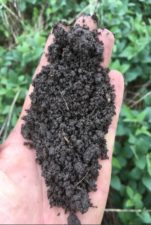
The Haney Soil Health Test
Of the many tasks a grower must manage throughout the year, proper nutrient management is a must for a successful pecan orchard or grove. A balance of proper nutritional levels will provide the best conditions to produce a consistent crop. Management not only impacts the production of a high-quality crop but is closely associated with...
Read more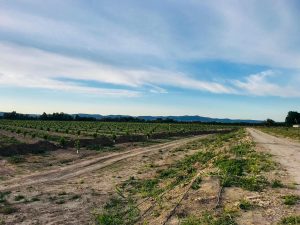
Pecan Production in Europe
Once a small, regional crop within the southern United States, pecans are now a globally marketed and, indeed, a globally produced crop. Pecans are produced in significant volume in the United States, Mexico, South Africa, Brazil, Argentina, Uruguay, Chile, Peru, Australia, and China. The pecan industry is also being developed in European countries, with commercial...
Read more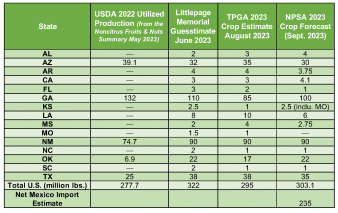
The Problem with Crop Estimates
For years, the U.S. pecan industry has based its annual expectations on crop “estimates,” which have been used to determine how large or small the crop may be. These estimates, in turn, have historically gone a long way toward determining the price growers receive for that season’s crop. The calculation of these estimates is inherently...
Read more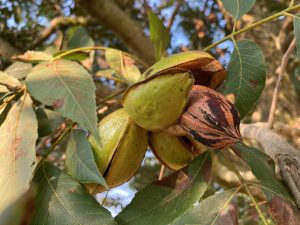
Functionality & Vitality of Pecan Tree Organs: The Fruit
The first human-to-human heart transplant was performed by Dr. Christiaan Barnard at Groote Schuur Hospital, Cape Town, South Africa, in December of 1967. The heart recipient lived a brief eighteen days after that operation. Still, the procedure laid the foundation for critical human organ transplant surgery to become a viable practice for saving lives. According...
Read more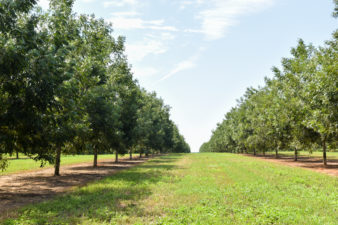
The Pecan Tree in September
Over time, the best growers learn, in many ways, to think like a pecan tree. If you want to know what to provide to the trees and when to get optimal performance and production from them, you have to understand what is going on inside the pecan tree at various critical times throughout the growing...
Read more
Soil Phospholipid Fatty Acid (PLFA) Analysis! The Not So New Kid on the Block
Whether listening to the radio, watching television, or surfing the internet, you are bombarded with messages about your health. It doesn’t matter what your age is; preventive care plays a role in keeping you healthy throughout your life. Simple things you can monitor, like proper nutrition, daily exercise, quality sleep, blood pressure, and routine wellness...
Read more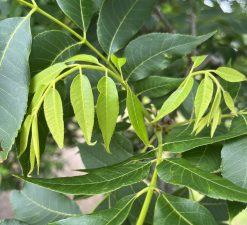
Functionality and Vitality of Pecan Leaves
I came home recently to find my seventeen-year-old son, Collin, working on his 11th-grade medical terminology class project. His assignment was to depict the major internal organs of the human body on a poster using candy or other snack foods. Human internal organs, shown here with LifeSavers, jelly beans, marshmallows, Rice Krispie Treats, and licorice...
Read more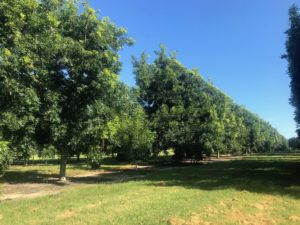
Summer Tasks to Consider in the Pecan Orchard
June can be an exciting time in the orchard. The pecans begin to size, and you’re in the heat of the struggle to make and protect the crop and busy with most any task imaginable in the orchard—applying fungicide, mowing, fertilizing, scouting, spraying for certain insects, spraying weeds, the list goes on. Here are a...
Read more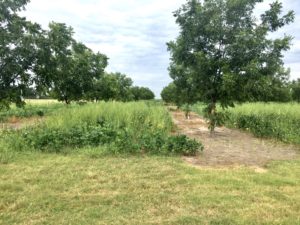
Cover Crop Uses in Pecan Silvopasture
It must be spring; pecan trees started breaking bud in late March in southern Oklahoma. This time has everyone thinking about a new growing season. So far this year, I have received more questions on cover crops than any other year in recent memory. With that in mind, it is a good time to discuss...
Read more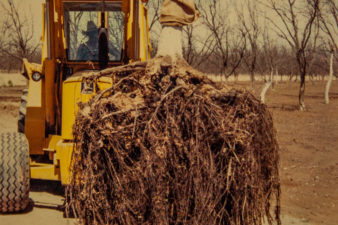
Functionality and Vitality of Pecan Tree Organs
I’m an organ donor; at least, I’ve signed up to be one if the “opportunity” arises. As many generous and well-intending people have done either at the time of their death or, in some cases, while still living, I am one of approximately 165 million people in the United States today who is willing to...
Read more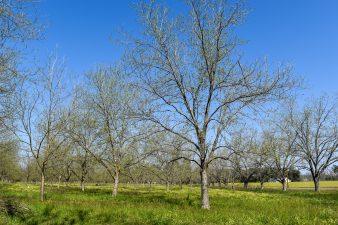
Budbreak Sets the Clock for the Pecan Season
A new pecan season is upon us. For the grower, this means anticipation of what this year’s crop may bring. Will the trees set a good crop of nuts? Will crop maturity and harvest be ahead or behind schedule? At this point, these secrets remain hidden within the trees and will begin to be revealed...
Read more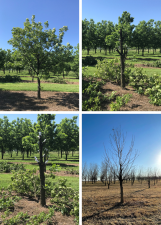
What You Need To Know About Grafting Pecan Trees
Although the calendar shows that we have just started a new year and it is still winter, you wouldn’t know it by the temperatures outside. High temperatures have been running in the 60s and 70s during the first few days of January, but old man winter isn’t done with us yet. With the harvest season...
Read more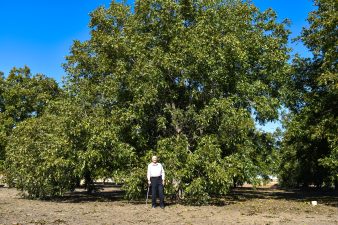
A “Nutty Hobby” Becomes an Award-Winning Pecan Orchard
What’s the secret to growing the perfect pecan? Or, more importantly, what’s the management trick to producing high-quality pecans year after year? For decades—if not centuries—pecan growers have sought answers to this complex question, and researchers have wrestled with uncovering the management practices that will lessen alternate bearing and bring the industry closer to producing...
Read more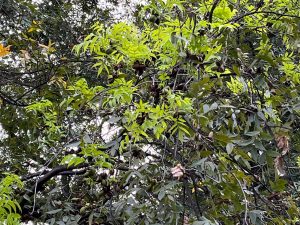
What Happened to My Pecans?
Harvest is typically the culmination of a long, hard, strenuous growing season, and this year is no exception, as it was a brutally tough summer for many. Lack of rain and extreme temperatures, followed by an extensive outbreak of yellow aphids, was the norm in many areas. So, what should be an exciting moment in...
Read more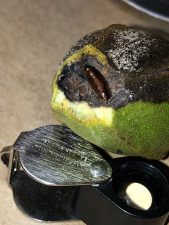
Pecan Bud Moth: Hidden in Plain View
The pecan bud moth, Gretchena bolliana, is an early-season pest of pecan foliage and can be especially damaging to nursery trees across much of the U.S. Pecan Belt. Older, established trees can generally tolerate the damage from pecan bud moth. With so many other serious pecan pests to deal with, this is basically all you...
Read more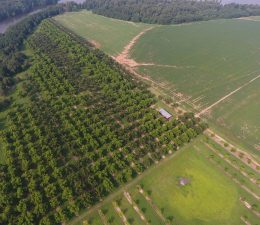
Pecan Orchards Improve Soil Quality
Consumers are increasingly concerned about the environmental impacts of food production. In many ways, pecans have more to offer consumers besides a healthy, great-tasting product. Pecans are native to North America. They are a long-lived, perennial crop. Their long lifespan keeps a lot of carbon locked up in the tissues of pecan trees for an...
Read more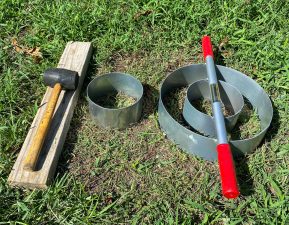
Why is water infiltration important?
We have made it through a long, hot, dry summer and have reached one of the most important times in a pecan orchard. The nuts have finished sizing, and it is time to start filling the nuts. Water is a crucial component over the next few weeks, not only involved in the nut filling process...
Read more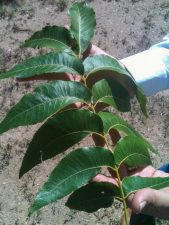
Abundant and healthy leaves, the key to high-quality pecans
Each year our state pecan show contains examples of Texas-grown pecans attaining outstanding quality. The grand champion native pecan from 2021, judged at the most recent TPGA conference, was entered by the late Chester McCown of Runnels County, and it weighed 49 nuts per pound and was 48% kernel—exceptional for a native pecan. The grand...
Read moreWater can be a blessing and curse for pecans in July
We will be well into the nut sizing period here in Georgia by the time you read this article, and water will play a critical role in several ways. For one, rainfall is good for soil moisture, which is the primary factor involved in sizing the pecans. On the other hand, rainfall can be a...
Read moreHow Do Pecan Biofungicides Work?
We have made it through another winter, and the pecan trees are growing catkins and nut clusters as we impatiently wait to see who will be happy with their crop and who will wish they had more. The first crop estimate will take place this month. It has been a typical spring, with questions on...
Read more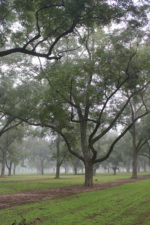
Images from the pecan world
A father once told his son that a person should never miss an opportunity to keep their mouth shut. Sage advice I should consider more often, and I’ll add to it—one should keep their eyes and ears open. Whether we realize it or not, each of us uses a somewhat unique learning style, usually relying...
Read more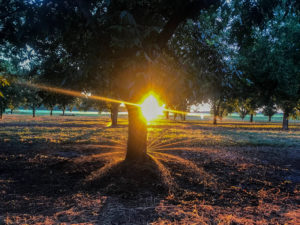
Thinking like a pecan tree
Sometimes when you’re out in the orchard and you listen closely amid the bird song, you can hear the leaves rubbing edges in the breeze, busy at their work of changing sunlight to sugar with a little help from the roots pulling water and nutrients from the soil. You’ll have to switch off the tractor...
Read more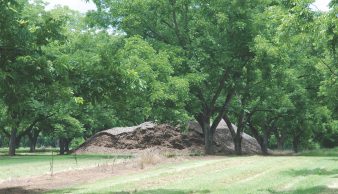
Alternative fertilizer sources for orchards
As I write this article, Mother Nature is reminding us that it is still winter. After a couple of days with temperatures above 70 degrees F, I have seen freezing rain, sleet, and snow over the last 24 hours. Of course, the weather is a major concern in the short term, but if you ask...
Read more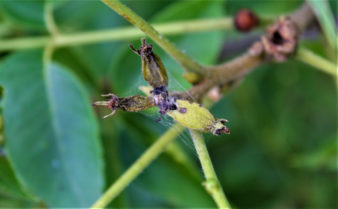
Concepts of pecan pest management
It would be convenient to open a 2022 pecan pest management calendar tailored for you, detailing what needs to be applied and the date to apply for each pest that crosses your path this year. We know that certain pests will need to be managed during the year and whether this is likely to be...
Read more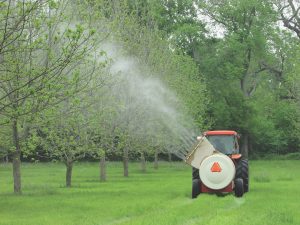
Rising fertilizer costs require attention to inputs
There is an old saying that you have to spend money to make money. This is certainly true when it comes to growing pecans, but there is a fine line between spending money to make money and spending money to lose money. That line becomes even thinner at the current cost of fertilizer and chemicals....
Read more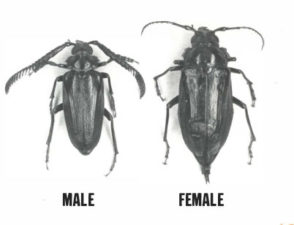
Beetles that feed on pecan roots
We are all familiar with the concept that the squeaky wheel gets the grease. Managing insects attacking pecan is no different considering that the same squeaky pests get the proverbial grease. Pecan foliage laden with aphid honeydew and chlorotic spots elicited by the black pecan aphid cannot be ignored nor can those pecan kernels laid...
Read more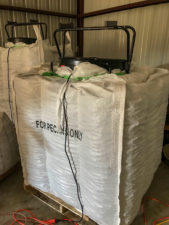
Protecting pecan quality through and beyond harvest
Harvest has arrived, and all the tasks that go into growing and protecting the crop have come to a close—at least for the next two or three months. At this point, it’s all about putting nuts in the wagon. But, for the Southeastern grower, harvest brings with it a new set of worries to consider....
Read more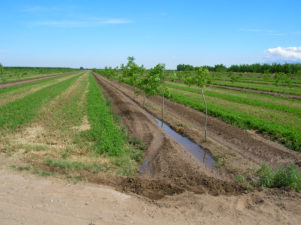
Using alley cropping on your farm
This week found me browsing through a few hundred 2×2 slides, looking for examples of diseases on pecan trees. For you youngsters that have grown up in a digital world, you missed out on slide projectors and C-41 film processing. During my search, I found a few slides taken on a Hort-418 class trip to...
Read more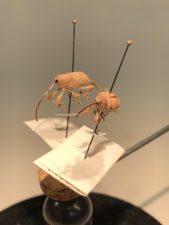
Pecan weevils’ local movement in an orchard
Pecan weevils are sustained solely by the energy derived from their host, i.e., pecan and hickory nuts, so we should expect them to be experts in finding nuts. To begin to find nuts, adult weevils must move to the host tree canopy (after emerging from the soil) by flying or crawling. Those that take flight...
Read more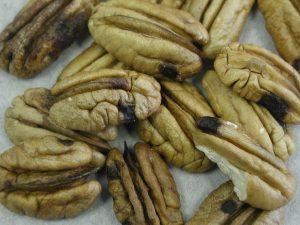
Don’t trip near the finish line
The Olympic Games come into our lives every four years, bringing stories of triumph and heartbreak. I’m always impressed with the dedication of talented athletes who set aside living a normal life, sacrificing socially and financially for the chance to win a medal and have their names etched in history’s record books. While some achieve...
Read more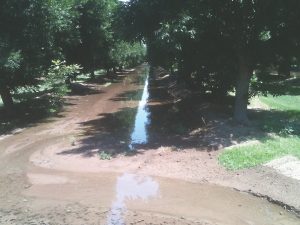
Late-season water demand: how much is enough?
Pecans are considered a high water-use crop, and pecan’s water demand peaks during the kernel filling stage, which occurs from mid-August through mid-September. In Georgia, we recommend 3,600 to 4,000 gallons per acre per day for trees bearing a commercial crop during this critical period. We are fortunate in the Southeast that rainfall contributes to...
Read more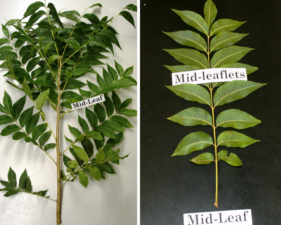
The importance of pecan leaf analysis
What a difference a year makes! Last year, the OPGA, Tri-State, and TPGA Conferences were all cancelled. Now, just last month, I joined Monte Nesbitt at the Montz Pecan Orchard for the Clay County Field Day. The second week of June, I attended the Oklahoma Pecan Growers Association Conference in Broken Arrow, Oklahoma. This month,...
Read more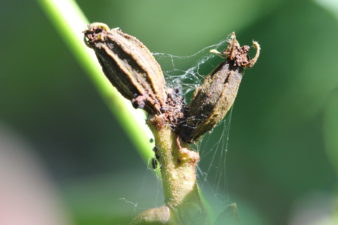
Factors affecting pest abundance in the orchard
Without pest management in a pecan orchard, growers sacrifice nut yield and quality. Indeed, it would be a rare season if a pecan orchard did not need input for pest management and nut harvest in that orchard met expectations for commercial production. And this is why, year after year, the same insect pest species that...
Read more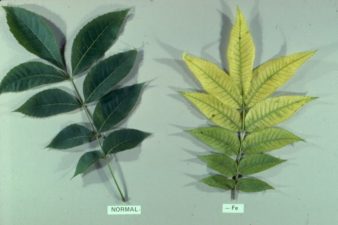
Micronutrients for pecans, just a little makes all the difference
Ask any pecan horticulturist—and hopefully most pecan growers—what macro- and micro-nutrients do pecan trees need to grow, and they will quickly list that pecans require 17 essential elements for growth: carbon (C), hydrogen (H), oxygen (O), nitrogen (N), phosphorus (P), potassium (K), sulfur (S), calcium (Ca), magnesium (Mg), boron (B), chlorine (Cl), copper (Cu), iron...
Read more
Make the most of your airblast sprayer, your most valuable orchard asset
For anyone attempting to grow pecans for profit, the only essential piece of equipment for accomplishing that task is an airblast sprayer. Well, you also need a tractor to pull it through the orchard and power the pump on PTO-type machines, so that’s really two essential pieces of equipment. Every other piece of equipment used...
Read more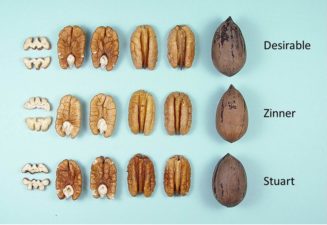
New Pecan Varieties to Consider When Planting
The age-old question for pecan growers is “What variety should I plant?” We have a lot of options in the Southeast. And truthfully, there is no single answer out there that will be suitable for everyone. Every cultivar has its good and bad points. The real question you need to ask yourself is “What am...
Read more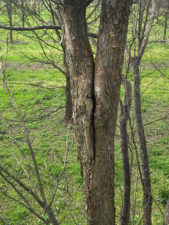
Pecan Limb Breakage Links to Tree Health
Most pecan orchard managers should now be finished with field harvest and cleaning. They may continue to weigh their options on selling the crop or putting it in cold storage to hold out for a better price. These managers will soon return to the chore of orchard cleanup and pruning that always follows harvest, preparing...
Read more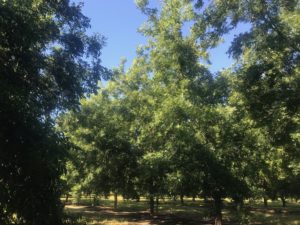
Make the Most of Hedge Pruning in the Southeast
While the 2020 pecan crop was good from a volume standpoint in Georgia and much of the Southeast for those areas spared the brunt of hurricane damage, most growers have not been able to sell much of their crop at a profitable price so far this harvest season. According to USDA NASS and AMS pricing...
Read more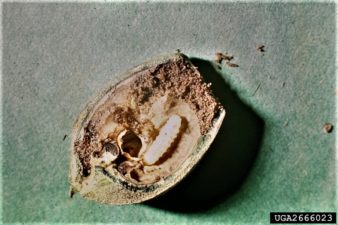
The Nut Curculio: A Lesser Known Pecan Pest
Broad knowledge of the arthropod pests attacking pecans enhances one’s pest management in pecan orchards. When the focus is on the major pests we are familiar with, we miss detecting signs and symptoms of minor pests. Even though minor pests cause little economic injury to the tree or crop, occasionally their numbers and subsequent damage...
Read more
5 Late-Season Tips for Your Pecan Crop
We are now in the home stretch for the 2020 pecan growing season. Hopefully, at this point, you have done what was required to grow and protect a good crop. But it’s not over quite yet. There are still a few things left to consider as we move into September in order to get the...
Read more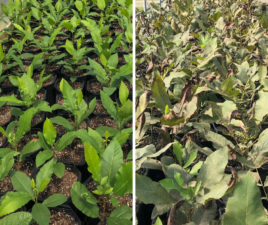
Analyzing Water Quality’s Effects on Pecan Nurseries
We are slowly moving toward a more typical work schedule, but COVID-19 is still impacting us at a personal, community, state, and national level. I have been traveling to a few locations but still doing most consulting by phone and email. Most of the issues I’ve seen have been typical of what we would expect...
Read more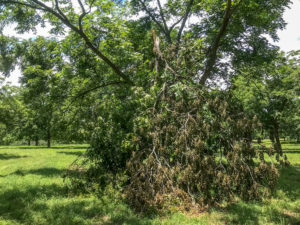
Tips for Cleaning Up Storm-Damaged Trees After Mother Nature Throws a Curveball
We’re off and running on another year of growing pecans! So, how many years has it been for you? Can you recall any two years ever being the same? At the moment, the season follows the same pattern as always. Some folks have a crop; some insist they don’t and will not harvest, while others...
Read more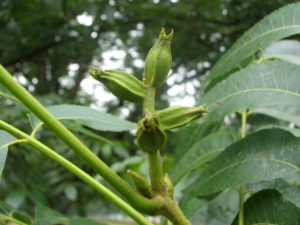
After the June Drop, protecting your remaining pecans
So far, as I write this, it looks as though the female flower bloom in Georgia is one of the best we’ve had in quite a while. This bloom is very encouraging and somewhat expected, going into our second growing season following a major hurricane. The response of trees in other previously hard-hit areas along...
Read more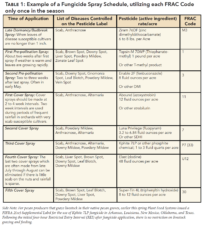
Protecting Our Crop, Protecting Our Fungicides
As I sit down to write this article, we are firmly in the “stay-at-home” or “shelter-in-place” directives, depending on the state in which you reside. So, pecan orchard visits have been limited, but I still receive plenty of texted photographs, phone calls, and emails as we enter a new pecan season. Many of those messages...
Read more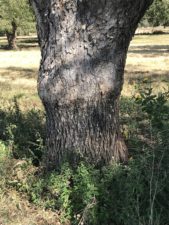
ID’ing Varieties & Examining Nut Abnormalities
As I start to write this article, outside Old Man Winter is throwing everything at us—freezing rain, sleet, and snow, a wintry mix. Fortunately, we have just about finished up pecan harvest because it will probably be too wet to do anything in the orchard for a while. While 2019 wasn’t a great year for...
Read more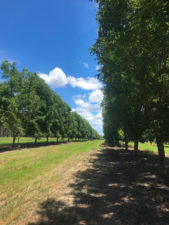
Growing Pecans for Today’s Market
We’re still trying to rebuild in much of Georgia’s pecan production region after the destruction caused by Hurricane Michael and the issues caused by the tariffs imposed last year on pecans. Growers are rehabbing their orchards and replanting pecan trees. Some orchards have been cleared and completely renovated with new plantings. And surprisingly, I am...
Read more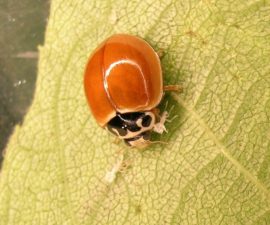
Lady Beetles, Pecan Orchards, and Ground Covers
Pecan aphids have many natural enemies. Some are rarely seen and may not be recognized for the good they do against pecan aphids. Although important, these natural enemies will be saved to write about later. Instead, this article focuses on the well-known and commonly seen lady beetles whose striking colors cannot help but attract attention....
Read more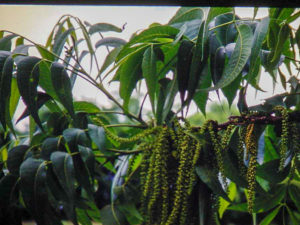
Understanding Pecan Tree Dichogamy
If you have been following the Pecan South’s Pecan Newsletter this fall, you will have read several growers’ comments on pollination issues affecting their crop. Here, I’ll review the mechanics of pecan pollination and how different environmental factors impact pollination each spring. This review should help you design new plantings in the spring of 2020...
Read more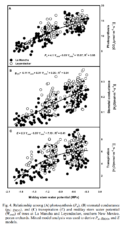
Photosynthesis: Turning Sunlight, Water and Air into Pecans
Except for a few parasitic plants, plants do not depend on any other organism to capture their food energy for them, the way we do. Most plants can make all of their own food using the chemical reactions of photosynthesis to supply what they need for energy and growth. There are really only three “raw...
Read more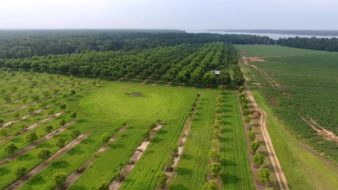
What Are a Pecan Orchard’s Ecosystem Services?
A recent report from the Intergovernmental Panel on Climate Change (IPCC) suggested agriculture held part of the answer to climate change. Farmers often meet climate change with skepticism, but before you label me as a fruitcake for bringing this up, hear me out. I’m not here to judge or sway your opinion on climate change....
Read more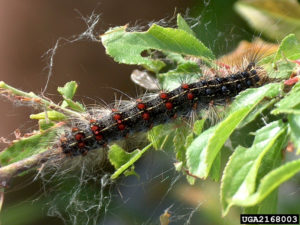
Watch out! These invasive species may threaten pecan production
No one has ever said that growing pecans is easy. From planting to producing trees, we have to deal with animals, diseases, insects, and weeds, all of which can have a devastating impact on our bottom line. For routine problems like scab, pecan nut casebearer, weevil, squirrels and crows, we know pretty well what we...
Read more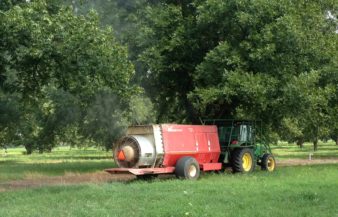
How to Get the Most Out of Your Fungicides
In the midst of a big turn-down in the pecan market, growers need to cut costs to make up some of the loss in profit potential. The problem is there are only so many things you can do. Crop load determines how much nitrogen you need to apply, so you can only cut corners there...
Read more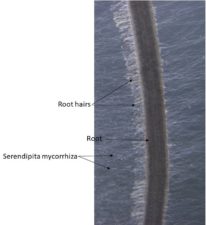
Soil Health: Does your orchard need a checkup?
Over the last few months, I have visited many potential pecan orchard sites in several states. As always, one of the first topics discussed is the soil at the proposed site. The importance of a good soil for pecan production cannot be overemphasized. Planting a pecan orchard is not a short-term goal and it often...
Read moreNitrogen in Pecans Versus Other Crops
Nitrogen (N) is the essential plant nutrient of greatest concern in most commercial plant production systems, including pecan. Although nitrogen may be present in irrigation water or resident in soils from ongoing organic matter decomposition, supplemental nitrogen fertilizer is typically required in field and orchard crops every year. Conversion of nitrogen to plant-usable forms (nitrate,...
Read more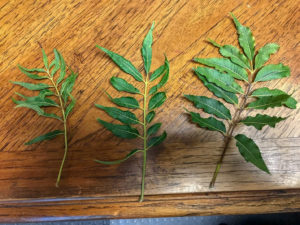
Handling Herbicide Drift in Pecan Orchards
Southeastern pecan orchards are often found growing adjacent to fields of annual row-crops. As a result, the tree canopies of these orchards are often vulnerable to injury from herbicide drift from the adjacent row crop fields. This normally occurs from April through June as weeds are eliminated from fields in preparation for planting or soon...
Read moreTo Mulch or Not to Mulch: What is best for my pecan tree?
SPRING! It is quickly approaching, but what is it. It is one of the four conventional seasons, coming after Winter, but preceding Summer. Astronomically speaking, it starts on the Vernal Equinox and ends at the Summer Solstice. If you ask folks what they associate with this season, they’ll say Spring is a time of renewal,...
Read moreDifficult Pruning Decisions for Storm Recovery
The cleanup from Hurricane Michael is on-going here in Georgia and many growers have reached the point where they have a lot of the debris cleaned out of the way but have to decide what to do with mangled trees that remain standing. The answer will depend on a number of factors, including tree density...
Read more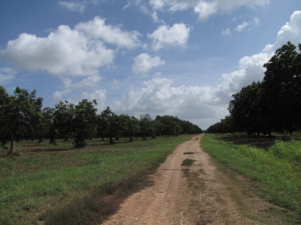
Before You Plant, Evaluate Your Soil
Each January, people throughout the southern United States prepare to plant a new pecan orchard. For many, it’s a first-time venture, perhaps even their first agricultural endeavor. Others may be expanding or renovating an existing orchard by planting trees on new ground or within their present boundaries. Some people may be planting ten trees, while...
Read more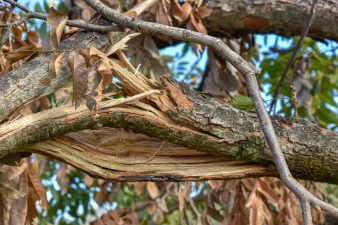
Trying Again After the Storm
By now, everyone is familiar with the havoc wrought by Hurricane Michael on the Georgia pecan industry back in October. Half the Georgia crop was lost along with over 740,000 trees, resulting in a loss equivalent to approximately 17 percent of Georgia’s pecan acreage and an estimated total of $560 million in losses to the...
Read moreLow Input Doesn’t Mean ‘No’ Input
Pecan Scab! Just mentioning this fungal disease makes grower’s grab their wallets. Ask just about any pecan scientist or grower and you will get the same answer. Pecan scab is the most economically important disease of pecan in the southeastern United States. It can devastate the leaves and nuts of susceptible cultivars in humid regions...
Read morePostharvest Management Matters
Harvest is a dividing line for two important phases of pecan production. The “preharvest” phase involves everything that goes into setting, growing and protecting a pecan crop while it is on the tree. We generally count all of the 200 plus days from budbreak to shucksplit as the pre-harvest period, but it includes the care...
Read more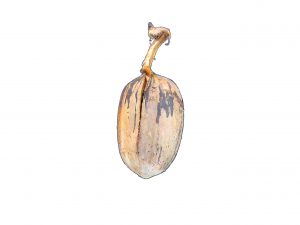
Beware of Late Season Issues Resulting from Inadequate Irrigation
We are nearing the end of the 2018 growing season but still have some issues to be concerned with. The relatively large ‘Stuart’ crop brings to my mind some issues that we almost always see when ‘Stuart’ trees are heavily loaded, but they are also issues that growers tend to forget about until they show...
Read moreAs the World Turns, the Marketing Landscape Shifts
Growers that choose to get into the pecan business must love carnival rides, specifically roller coasters. Why would I make such a remark? In a nutshell, if you stay in it for the long term, you are going to go through a lot of ups and downs. If you take a quick look over the...
Read more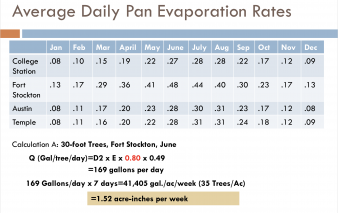
Water Needs of Pecan Trees: Revisiting McFarland & Worthington’s Lysimeters
Water is life to a pecan tree. Water mediates photosynthesis and the production of carbohydrates vital for growth and the development of leaves, limbs and nuts. Water transports and distributes many plant nutrients throughout the tree that are harvested by its roots. And transpiring off the surface of pecan tree leaves, water acts as an...
Read more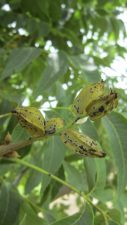
Scab Battle Heats Up, Watch for These 3 Factors
Planting resistant cultivars, planting on elevated land, and improving the orchard’s airflow are three key factors in managing pecan scab. However, for existing orchards, it is too late at this point in the season to do much about these variables. So, we are left with the most direct line of defense—fungicide application. Regarding this route...
Read more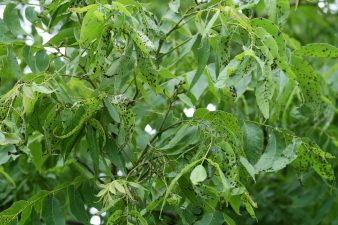
If You Want to Have Nuts, Protect Your Leaves
Well, as I sit down to write tonight, it is early April. Spring is here…right? During this first week of April, the forecast was in the low 40s in Louisiana, and the weatherman said there would be over a foot of snow in the northern U.S. by the end of the week. During the last...
Read more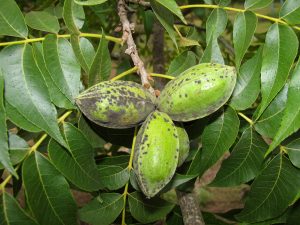
5 Costly Scab Control Mistakes & Some Possible Fixes
The USDA issues a final pecan crop report annually at the end of June or beginning of July, providing the industry a retrospective picture of the previous year’s pecan production across the pecan belt. Missing from this official documentation is any tabulation of crop loss. An unknown tonnage of pecans in each state fail to...
Read more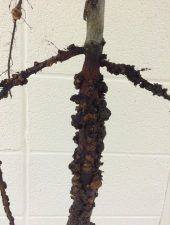
Pecan Root Knot Nematode: A Hidden Problem
Certain problems you encounter in growing pecan trees have characteristic symptoms and have been such obvious problems through the years that they have been studied extensively and have well-defined methods of treatment. Pecan scab, mouse ear, and zinc deficiency would fall into this category. But sometimes pecan trees may suffer from less obvious symptoms, and...
Read more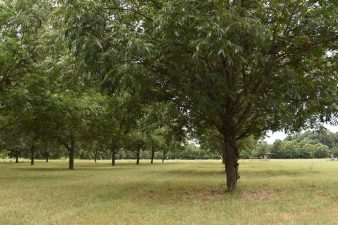
A New Year, A New Crop to Care For
So much can change over a short period of time. I often look back to previous year’s conditions to compare with present conditions. Last year, many growers, especially those that had other fruit crops in addition to their pecan trees, were very concerned about the shortage of cold weather received over the 2016-2017 winter. It...
Read morePruning: A Proven Planting Method
The tree-planting trend continues here in the Southeast. I don’t know of a single nursery in Georgia that has trees available for planting now unless you booked way in advance, and many nurseries are rapidly booking up for the 2019 crop as well. So, with all the trees being planted and with the damage growers...
Read more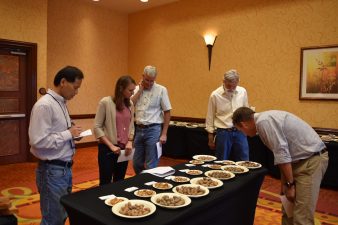
The Showstoppers: High-Quality Pecan Cultivars from the Texas Pecan Show
Pecan shows are a time-honored November-December tradition in Texas. Although rudimentary pecan shows were held in the early decades of the 1900s, the Texas Pecan Growers Association hosted the first official Texas Pecan Show in 1950. County Extension offices began holding local shows in 1953. The TPGA and Extension shows merged in the late 1950s,...
Read moreTwo Months Post-Irma, We’re Still Learning
Back in September, Georgia pecan growers got to experience what it would be like to grow pecans on the Gulf Coast. Hurricane Irma followed Interstate 75 directly up the Florida peninsula into Georgia with sustained winds of 20-40 mph and gusts reaching from 50-75 mph, something our friends in Alabama, Mississippi, and Louisiana are all...
Read more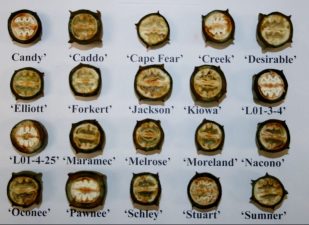
Extreme Weather, Deja Vu, and a Chance to Learn
Once again, we find ourselves talking about wet conditions at a time of year when we are usually discussing drought and high temperatures. August and early September are usually dry and hot, so we spend our time discussing ways to increase irrigation to meet the water requirements of pecan trees during the nut filling period....
Read moreFour Important Tips for Managing Your Orchard Floor This Fall
September brings about harvest anticipation and preparation for pecan growers in the Southeast. Lots of attention is rightfully paid to what is happening up in the tree canopies. Aphids and mites are still a threat to balloon out of control. It is a big month for stinkbugs. Hickory shuckworm can inflict economic injury in the...
Read more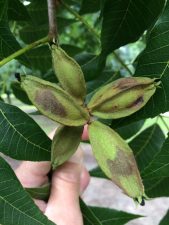
Production Problems Arise as Effects of Warm Winter Linger Throughout Growing Season
Warm winters like we had over the winter of 2016-2017 can cause a variety of issues for pecans, many of which may not become obvious until the season progresses. I have been concerned about this since bud break, and we have seen some of these issues come to pass. Hopefully as the season goes on,...
Read more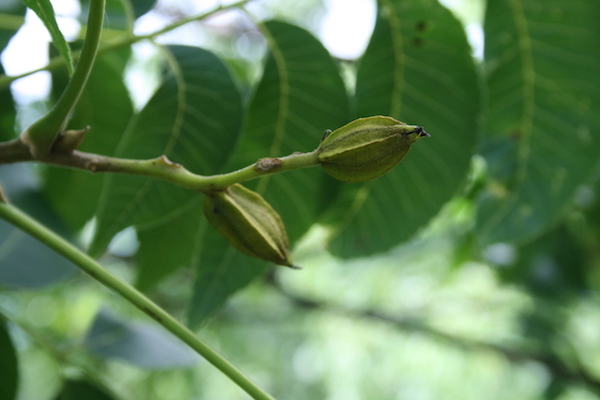
So Far, So Good, but Summer Isn’t Over
We have reached the midpoint of the pecan growing season, and despite some unusual growing conditions, we appear to still have a good crop of nuts on trees in Louisiana. Looking back over the last few months, several articles were written outlining all of the possible adverse responses the pecan trees may have due to...
Read moreWhy Mulching Matters
In 1994, I was interviewing for a job with Auburn University and was being toured through the E.V. Smith Research Center near Shorter, Alabama, by Bill Goff, Professor in the Department of Horticulture. Dr. Goff was giving me an overview of active research projects on pecans at this central Alabama Agricultural Experiment Station-owned research center....
Read moreIrrigation and Fertilization of Young Pecan Trees
Most pecan growers are understandably eager to get young pecan trees into production. Aside from weed control, the two most important factors in doing this are irrigation and fertilization. Until recently there were no research-based recommendations for these two very important requirements. Before I get into these two topics, a word about site selection. The...
Read more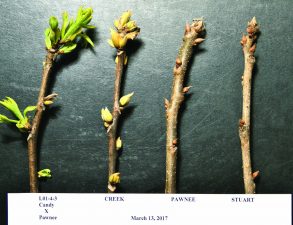
Warm Winter May Spell T-R-O-U-B-L-E
The last couple of weeks have been busy, beginning with a trip to Mississippi for the Southeastern Pecan Growers Association Conference. That was followed by a trip to Las Cruces, New Mexico, for the Western Pecan Growers Association Conference. While both educational programs provided information on a wide range of topics, the meetings also allow...
Read more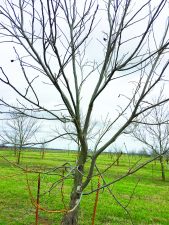
Pecan Tree Training Tips
Thousands of young pecan trees have been planted in the southeastern U.S. this winter, and they are primed to break dormancy and grow in the coming days. Few, if any, newly grafted pecan trees grow into a nice, central leader-shaped tree on their own. Without some efforts at training them, all these thousands of new...
Read moreWhat Should You Do About Low Soil pH in the Herbicide Strip?
Fertilization of mature pecan orchards by application of dry nitrogen (N) fertilizer to the herbicide strip (known as broadcast banding) can help reduce fertilizer costs and the amount of wasted N fertilizer being applied to pecan orchards by eliminating the fertilizer that was applied to the grassed middles. However, a number of growers have continued...
Read moreLiebig’s Law of the Minimum
Last month, Monte Nesbitt provided us with a great overview on biotic and abiotic stresses that pecan trees had to deal within the 2016 growing season. He also called out researchers and extension specialists (and I agree with him) for too often generalizing a problem with the “tree stress” response. Since I am as guilty...
Read morePecan Tree Stress
The 2016 pecan harvest did not end positively for many growers in Texas — especially it seems in the eastern region of the state. In a year of favorable market prices, growers were frustrated to not be able to deliver top quality and receive top prices. Incomplete kernel filling was realized in some orchards. Dark...
Read more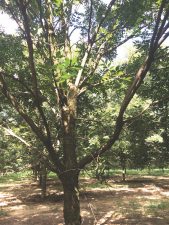
How Close Should Tree Spacing Get in The Southeast?
Pecans need two main things to grow and be productive: water and sunlight. Everything else is secondary. It’s been proven time and time again. Take care of these two things and everything else gets much easier. Since we have access to good water and most orchards are now well irrigated, sunlight becomes the most limiting...
Read more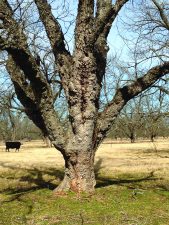
The Good and Bad of Abundant Precipitation
Last month, Monte Nesbitt shared information on the impact that above-average precipitation has had on pecan scab infection on several new varieties. Early spring rains allowed researchers and growers to get a unique look at how pecan nuts would fair when exposed to extreme scab pressure. While this provided us with great information on scab...
Read more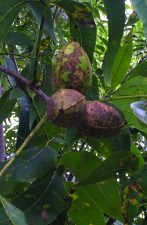
Scab Resistance Update
Spring precipitation amounts in 2015 and 2016 have been truly impactful on agriculture in Texas, replenishing lakes and reservoirs, recharging deep soil strata with water and bringing discussions of historical droughts to at least a temporary halt. The 2016 pecan crop bears marks of these El Nino-influenced rains in many areas of Texas. The marks...
Read moreWill rising pecan acreage cause the sky to fall?
I can’t tell you how many times I have been asked about or heard someone comment on the great potential for the pecan market to bottom out a few years down the road thanks to all the new acreage being planted. Make no mistake, anything that goes up is bound to come down at some...
Read morePecans, FSMA and GAPs, Oh My!
This spring I have attended a number of pecan and commodity meetings at the parish, state and regional level. As I have talked with growers and processors of various commodities, it has become apparent that Good Agricultural Practices (GAP)/Good Handling Practices (GHP) Certification is gaining in importance and use across the nation. This type of...
Read moreTo Feed or Not to Feed — Foliar Fertilizers
The water-soluble fertilizer industry is alive and well. Unverified sources place the annual gross sales of water-soluble fertilizers around the world at $12.2 billion dollars, involving over 13 million tons of products used worldwide each year. Water-soluble fertilizers may be used in injection systems in greenhouses, nurseries, orchards, livestock feeding systems, and row crop production...
Read more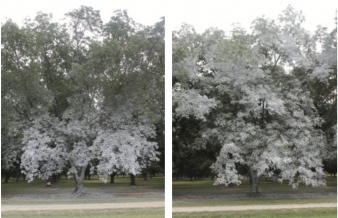
Scab Management Keys: Sprayer coverage, orchard environment
As we descend into another spraying season, keep the following in mind. If you have problems with scab control, the least likely factor will be the efficacy of the fungicide you are using. Unfortunately, this is often the first thing most growers try to pin the blame on. Aside from the obvious issues of rainfall...
Read moreRain, Rain, Go Away. Come Again Another Day!
As I sit down to write this article, the weather has been a dominant story in the news. A large, very slow moving dip in the jet stream crawled across Mexico, resulting in tropical moisture streaming across Texas, Louisiana, Arkansas and Mississippi for several days. A large portion of this area received 1.5 to 2...
Read more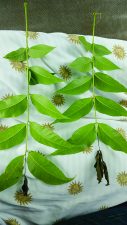
Dormant-Season Disease Prevention
Southeastern pecan growers today are living in the good times when it comes to disease control. A large number of low-toxicity fungicides are available in easy-to-handle packages. Large capacity air-blast sprayers are pulled behind tractors fitted with air-conditioned cabs. Some growers even have cameras on the sprayer wired to monitors on the dashboard that display...
Read moreLeaf Scorching of Young Pecan Trees, Part 2
Back in the November issue of Pecan South, I began a discussion on leaf scorching in young pecan trees. We’ve seen a lot of it lately and I believe most of what we are seeing is a cultural management issue involving difficulty with root establishment, particularly in intensively managed operations where the trees are pushed...
Read moreTough Year Ends With an Unexpected Surprise
To say the last few months have been tough for pecan growers would be an understatement. Last month, George Ray McEachern discussed several of the quality issues the Texas A&M orchards suffered through this harvest season. We saw similar problems in Louisiana as well, with Oct. 22, 2015 being the pivotal date. In the 8...
Read moreThe Glyphosate Debate
Glyphosate herbicide is arguably the most important synthetic chemical product in the history of the pecan industry. For 40 years it has helped growers effectively combat a wide spectrum of annual and perennial weeds. It was instrumental to the development of the ‘sod and strip’ system of orchard floor management, reducing disking and mowing practices...
Read moreLeaf Scorching of Young Pecan Trees, Part 1
There is a myriad of things that can cause leaf scorch on a young pecan tree including drought, water-logging, nutritional deficiencies, fertilizer burn, herbicide injury, bacterial leaf scorch, nematodes, anthracnose and other minor foliar diseases, etc. It can be and often is difficult in many cases to sort out the problem. Isolated incidents are usually...
Read more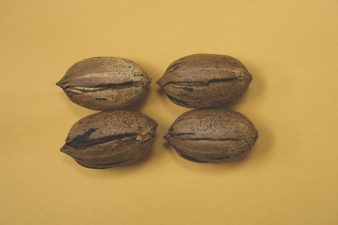
Late Summer Shuck and Nut Problems
Last month, Monte Nesbitt gave us an overview on the importance of maintaining good foliage in pecan trees and a description of the insects and diseases that can cause defoliation in pecan orchards in the southeastern U.S. I thought it would be a good idea to follow up his article with a discussion on shuck...
Read more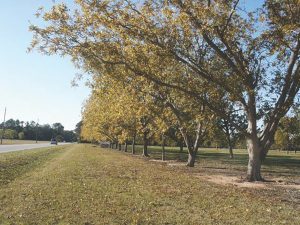
In Search of Fall Color
Thousands of Americans head out on the highways and byways of the country each year in search of fall color. Many southerners journey north where the cooler temperatures bring out the vivid red, bronze and gold foliage color hues that can be elusive or short-lived in the South. Technology, the internet and social media now...
Read moreDon’t Underestimate Value of Airflow, Elevation in Scab Management
Fungicides do most of the heavy lifting regarding scab control and we often tend to focus all of our attention on fungicide selection when battling scab. But, there are many more factors that go into protecting a crop from disease. Coverage, for example, is vitally important. If you don’t cover the nuts with fungicide, you...
Read more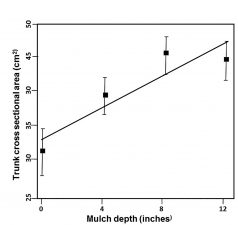
Mulching – overlooked and underutilized
It shouldn’t be surprising that pecan trees grow better when mulched, as mulching mimics the natural state of trees growing in a forest where the forest floor is covered with a layer of decaying organic matter. Roots developing underneath this layer are growing in a favorable environment, where temperature and moisture are more uniform, soil...
Read more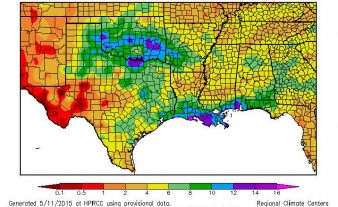
Summer Pecan Scab Defense
The start of the 2015 growing has been wetter than normal for many pecan growers in portions of Oklahoma, Central and Eastern Texas, the Central Gulf Coast and middle Georgia (Fig 1.). The National Weather Service has declared that El Nino is present, with a 70 percent chance of continuing through this summer and 60...
Read moreHow much fertilizer do young pecan trees need?
Root dry weight typically comprises 55-70 percent of total tree dry weight one year following transplant, which suggests that pecan tree transplants direct most of their resources to root establishment in the first growing season in the orchard. Pecan trees in the first two to three years of establishment have a limited root system compared...
Read moreHedging – Powerful Tool for Crop Load Management
There is a line in the old Roger Miller country song “One Dying and a Buryin'” where he says “It’s so simple I’m surprised I hadn’t done thought of it before yet”. That’s the line that comes to us as we have studied information on the response of pecan trees to hedging. The simple part...
Read more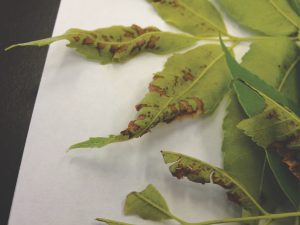
Zinc Thinking in the Southeast
Zinc is the 24th most abundant element in the earth’s crust, the eighth metal known to man, a component of ancient brass artifacts, and an ingredient of batteries, gutters and galvanized screws. Zinc is a relative newcomer to plant fertilizer, having not been discovered as essential to plant growth until 1926. Not long afterward, zinc...
Read moreCultivar Selection and Row Spacing: Science or Informed Opinion?
Over 100 years into commercial pecan production, we often still see more opinions regarding how to grow pecans than we see science. Even among pecan scientists, opinions vary considerably on many topics related to pecan production. The reason for this is that empirical data for some topics is so hard to come by in these...
Read more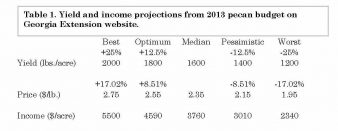
How many pounds per acre should you really expect?
Lake Wobegone is the mythical hometown that radio personality Garrison Keillor describes in his popular public radio show, A Prairie Home Companion. It is a place, he states, “where all the children are better than average”. While Keillor intends satire in that statement, many pecan growers, in all seriousness, plan on all their plantings to...
Read more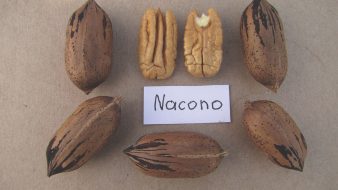
Pecan Variety Identification
Many situations arise that call for identifying a pecan tree and variety. Orchards are bought or inherited, sometimes with no map or planting plan of what was planted. People identify exceptional trees that they want to identify or name. Growers with a young orchard may discover trees producing nuts different from what they bought. Buyers...
Read more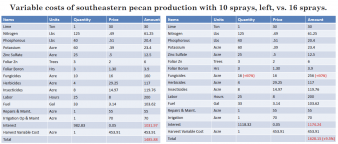
The new cost of pecan production in the Southeast
I recently attended the National Pecan Shellers Association Annual Meeting where New Mexico State Pecan Specialist Richard Heerema and I gave a joint presentation on “The Cost of Pecan Production”. While compiling this information for the southeastern production costs, I was a little surprised at how our costs have gone up only within a couple...
Read morePecan cultivar recommendations for the Southeast—2014-2015 update
While two consecutive rainy seasons with much higher than normal incidence of scab have made it difficult for growers, the increased scab has provided an opportunity for better evaluation of pecan selections for resistance to this devastating disease. Our expansion of cultivar evaluations beyond multiple locations in Alabama into the center of the major commercial...
Read more
Avoid late-season flooding
The pecan scientific community has collectively and rightfully stressed the importance of late-season irrigation. Larry Stein, Jody Worthington, George Ray McEachern in Texas and scientists in other states contributed to our modern understanding of the necessity of late-season irrigation to improve pecan kernel quality and reduce stress disorders like shuck decline and stick-tights. Darrell Spark’s...
Read more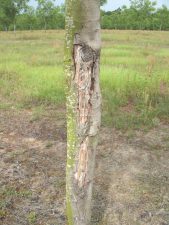
Bot canker on pecan
Young pecan trees are a big investment and we hate to see them get weak, decline, or up and die. I’ve seen a lot of young tree die-back this year. While much of this has been related to cold damage, some trees are feeling the effects of a subtle problem that often goes unnoticed until...
Read moreCasting Shadows
Pecan trees grow every year according to their overall health and growing environment. The gains in the growth of young trees that are one to five or six years old are usually quite obvious, with branches sometimes adding two or more feet of length in one growing season. They add height to their central leader...
Read moreInclude foliar sulfur sprays in June and July to maximize nut size
An insufficient plant supply of sulfur (S) has been shown to reduce crop productivity, diminish crop quality, affect plant health, and impair N-use efficiency. The effect of N application on plant performance is largely dependent on the S status of the plant and similarly, maximum plant response to S application will occur only when N...
Read more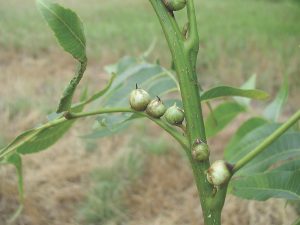
Ready, Set, Budbreak
In a National Football League game, the quarterback of the team on offense has 40 seconds from the end of the previous play to get the next play from the coach, gather his teammates in a huddle, tell them the next play, walk up into formation, glance at the opposing team’s defense, and bark out...
Read moreDon’t over-manage young trees
We’ve seen an incredible number of pecan trees planted over the last few years and at this point, it’s not slowing down. As the planting of pecan trees across the southeastern pecan belt continues this winter, I thought it would be a good time to discuss some of the issues I’ve dealt with over the...
Read more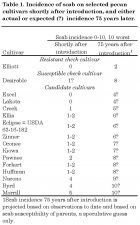
If not ‘Desirable’, what?
Desirable has been the mainstay cultivar in the Southeast for many years, surpassing ‘Stuart’ for the lead in new plantings many years back. And, it has been the mainstay for good reasons. Consistent production is the hallmark of ‘Desirable’. For many years, as a pecan consultant, I have had a task of estimating pecan crops...
Read moreA Pecan Orchard Christmas List
Many of us likely remember writing a letter to Santa Claus in the days of our youth — a checklist of the things we most wanted to find wrapped up with a bow on Christmas morning. Small town newspapers often publish Christmas lists that elementary school-aged children send in. It’s always fun to see the...
Read moreHow was your foliage this year?
Foliage retention until the first’ frost has always been a goal of pecan producers in order to keep the trees healthy and productive from year to year. It’s been tough to maintain good foliage health this year due to the ravages of scab, anthracnose, downy spot, zonate leaf spot, nutritional imbalances, and most significantly black...
Read more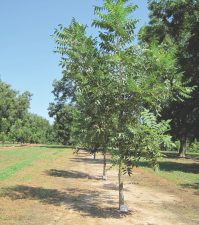
The pecan cultivar trial at Friendship Pecans
A pecan cultivar trial inviting industry-wide cooperation has been established at Friendship Pecans near Albany, Georgia. Our hope is that as many of the most-promising selections from all over the U.S. as possible can be evaluated side-by-side in one location. The experiment, initially, will have 4 trees each of 160 selections in a randomized complete...
Read more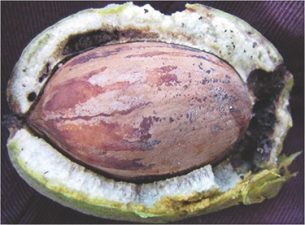
Wanted: High Quality Pecans (Part 2 of 2)
Placing a premium on growing high-quality pecans is not new. Organized pecan shows have been held in Texas since before 1950, and the objective of these shows was and is to showcase both large and very high-quality pecans. As our industry promotes pecans to new consumers around the world and educates them on the health...
Read more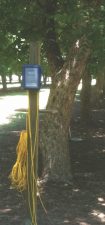
Wanted: High-Quality Pecans (Part 1 of 2)
A message delivered to pecan growers throughout the pecan belt in 2012 and 2013 is the pecan market, domestic and foreign alike, wants high-quality pecans. Millions of pounds of pecans grown in 2012 were either left in the field or remain stockpiled in barns, sheds or cold storage today, because they had quality problems and...
Read moreFungicide Advice With the Return of Scab to South Georgia
Over the last several years we’ve gotten used to winning the battle with pecan scab fairly easily thanks to a multi-year drought; however, that has all changed this year. Not only have we had larger amounts of rainfall, but it has been more frequent, which really presents ideal conditions for the development of pecan scab....
Read moreMechanical crop thinning in the West
Pecan crop load management can be done in several ways. Hedging reduces crop in the short-term on the trees that are hedged. Since hedging is done routinely in the West, my discussion will focus more on crop load management by mechanical crop thinning. In this method, pioneered by Mike Smith, Ph.D., and others in Oklahoma...
Read more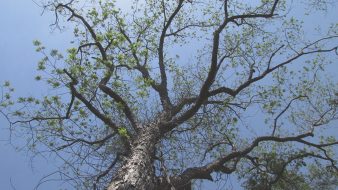
Early season fungicides – a sound investment
One of the facts of growing pecans in the Southeast is disease prevention. Sure, there are “dry spells” and even dry years when the pressure and concern of fending off a scab infection are less challenging, but from East Texas to Florida and all points in between, those are generally rare. Pop-up showers and thunderstorms...
Read moreWhat’s in your tank?
There’s a popular credit card advertisement that asks the question, “What’s in your wallet?” Well, if you’re a pecan farmer, the answer to that question may be less money, unless you’re careful about how you budget your expenses. There’s no question that you have to spend money to grow pecans. But, you can spend a...
Read more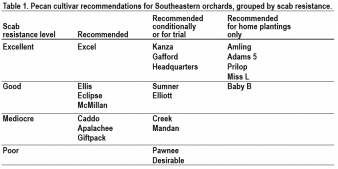
Pecan cultivar recommendations for the Southeast – 2013 update
Major advances in pecan cultivar development and selection have occurred in the past few years, requiring extensive evaluations and frequent updating of recommendations. Because the Alabama pecan industry has smaller growers, often without the equipment or economic incentive to spray intensively with large airblast sprayers, we have focused on pest-resistance to reduce spray requirements. We...
Read more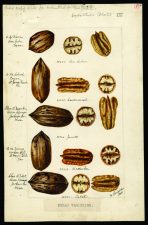
Pecan varieties for collectors
Let’s take a break from the usual routine of presenting information on pecan varieties that growers should considering planting for their scab resistance, consistent production, or potential profitability, and instead review pecan varieties to plant just because they make for great conversation. As a warning, let me preface this article by saying: Do not plant...
Read more‘Same old things’ won’t work in a changing industry
I’ll start this article off by telling you I’m not quite sure where its going. I’ve got a lot that I want to discuss and I’m not sure it will all tie together but I’ll do my best. The year 2012 has been an interesting one for those who grow pecans. It began with an...
Read morePlanting southeastern orchards for the export market
Like it or not, the new dynamic of export marketing, especially to China, is changing the pecan industry. This is true for growers, accumulators, shellers, processors and consumers, and is unlikely to change barring unforeseen circumstances. So, if you are a grower planting a new orchard, you would be prudent to make yourself aware of...
Read more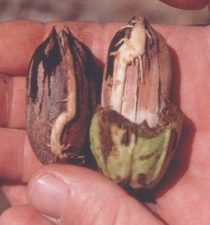
Future pecan trees available now
Obtaining pecan trees to plant in 2013 is a real challenge. If you haven’t contracted with a pecan nursery prior to the appearance of this article, you will likely sit on the sidelines during the upcoming winter tree-planting season. More trees are on the way. Nurseries, both established and new enterprises, from Georgia in the...
Read morePecan anthracnose in the Southeast
In 2011, those of us in the Southeast got to experience what it was like to grow pecans in the desert. Fortunately, we’ve seen more rainfall in the Southeast during 2012 than we saw last year. After all, it wouldn’t take much. While we have been thrilled with each rain we received, rainfall and pecan...
Read more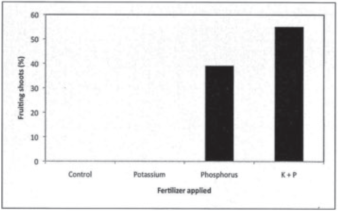
Major changes in how to fertilize pecan trees
Significant advances have been made recently that we believe should result in major changes in how pecan trees are fertilized, at least from Oklahoma east. Consider: • After many years of unsuccessful attempts to increase phosphorus (P) levels in pecan trees from broadcast soil applications, research has shown the ability to significantly increase this important...
Read moreOne Percent Kernel
The months of August and September are very important for pecan crop development. Shell hardening signals the end of the nut-sizing period, and the commencement of kernel filling. The date of shell hardening varies by variety and location. The early-maturing variety ‘Pawnee’, was at full shell hardening by the middle of July this year at Bastrop,...
Read more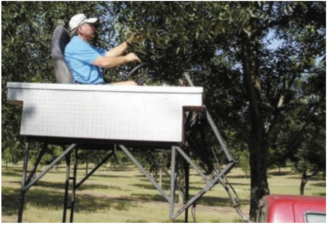
Custom Scouting: valuable resource for pecan growers
As long as I’ve been in the pecan business, entomologists have been recommending that growers scout their orchards. Usually, it’s something like monitor every fourth tree in every fourth row weekly. Keep track of various pests as they appear throughout the growing season from April until October. Learn the insects, learn the thresholds, learn the...
Read more
Lest we forget pecan scab control
Controlling pecan scab was not difficult for many growers in 2011. The much-publicized drought caused a total absence of scab in the entire state of Texas, and many portions of the humid southeastern pecan growing region had much less pressure than normal. No pecan grower would ever wish for an abundance of scab in their...
Read more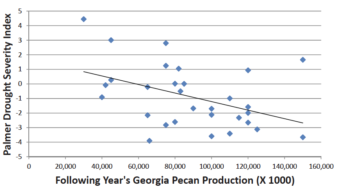
What does the 2011 drought mean for the 2012 crop?
Most of the pecan belt saw extreme to severe drought conditions throughout much of the 2011 growing season. Although here in the Southeast, we saw nothing like the conditions parts of Texas suffered, but we are still extremely dry. Many wells around the region went dry last year and current groundwater levels across the southern...
Read morePurchase, plant or renovate?
Following 4 years of pecan prices going up to unprecedented levels, a lot of people are interested in getting into pecan farming. There are various ways to do this. One way, the fastest way, is to purchase a producing orchard that is already in good shape and producing profitably. The main trouble with this approach is...
Read moreRapid orchard development practices
The pecan market in 2011 was exciting for those who had pecans to sell. Wholesale prices of $5 to $6 per kernel percentage point are comparable to what pecan retail prices were as recently as 2 or 3 years ago. This dramatic upward swing in pecan prices is a danger sign for some folks, yet...
Read moreEase into new cultivars
The recent booming pecan market has led to a renewal of the pecan industry. Acreage is on the rise and new people are looking to pecans as a crop and as a wise investment. With this, has come a great interest in pecan cultivars, particularly the new ones. I have kept largely silent on this topic...
Read moreHow Much Does It Cost to Send Pecans to China?
Selling pecans directly to China or other foreign markets, farfetched for many pecan growers only a few years ago, is now being seriously considered by many. When you are presenting a product and trying to sell at a good price, it is in your best interest to offer to and attract as many potential customers...
Read moreEvaluating Orchard Management With Nut Quality
The challenges and difficulties of the pecan growing season are brought to an end with harvest. After 7 or more months of spraying, mowing, scouting for insects, turning on irrigation valves and many other tasks, getting the crop into the cleaning shed brings a sense of relief and either accomplishment or disappointment depending on the...
Read moreClover Benefits Orchard Soil Quality
Orchard soil health is the basis of everything that takes place in the pecan orchard. The bottomland soils on which pecans grow in their native range vary considerably from those on upland sites where the trees are cultivated and grown commercially in the southeastern U.S. The loamy bottomland ridges to which pecans are adapted typically...
Read moreEarly Harvest Hurdles
Pecan growing as an industry is evolving significantly and rapidly with the continued introduction of early harvest varieties (EHVs). The USDA Pecan Breeding Program deserves accolades for making controlled crosses that have combined traits of large nut size, excellent kernel quality and early harvest, which has both expanded the industry’s growing range to the north...
Read moreHow Does the Hot, Dry Weather Affect the Crop?
If there was ever a year in Georgia to stretch out fungicide sprays, 2011 has been the year, at least through early June. So far this year, we have learned a little about what its like to grow pecans in the desert. As I write this in early June, we have had 4 days of...
Read moreWe Can’t Predict Which Pecan Cultivars Will Scab – Or Can We?
Perhaps the question should be “We can’t predict which cultivars not exhibiting scab now will scab badly pretty soon – or can we?” Certainly we can predict which cultivars will scab, simply by placing them in many locations in many states with many strains of the fungus where incidence is high and not masking the...
Read moreScab Control for Small Orchards and Landscapes
Pecan scab is a crop-limiting disease problem in the Southeast. For commercial pecan orchards, the prevention of scab on susceptible varieties is straightforward. Trees must be sprayed every 14-21 days from bud break to shell hardening with one of several EPA-registered fungicides to prevent leaves or nuts from damaging infection (Fig 1). An airblast sprayer...
Read morePecan Weed Control Options
Pecan producers are fairly limited in their choice of herbicide options. We have basically three burndown herbicides available for use on pecan. These include glyphosate, paraquat and glufosinate (Rely). Glyphosate is the old standby that has been used for years. When it first came out, glyphosate seemed like a miracle herbicide. Its systemic activity killed...
Read moreApply Herbicides On Soil!
Many pecan growers, we’ve observed, think you should spray herbicides onto existing weeds, rather than onto soil. This concept is true for that class of herbicides referred to as post-emergence, like glyphosate (Roundup, many others) or Gramoxone. Several problems can develop if you limit your herbicide use to post-emergence herbicides only. One problem is you...
Read morePecan Orchard Takeover Checklist
What you are about to read is not an article on walnut caterpillar, scorch mites or black pecan aphids — insects that come in seemingly overnight and take over your orchard. Nor is this an article describing what happens when you borrow money and the knock at the front door is your lender. Rather, this...
Read moreWhat’s Georgia Planting?
The Chinese appetite for pecans has placed a spotlight on our crop, which is increasing in popularity. This has led to a pecan acreage increase in Georgia, which from the phone calls and visits I have had, does not appear to be subsiding. Pecan nurseries have been unable to provide enough trees to keep up...
Read moreTexas Pecan Shows Not Just About Recognition
The pecan show is underway throughout Texas, with 26 county or multi-county shows representing approximately 45 counties. Four regional shows are held in mid-December and the state competition takes place at the TPGA conference in July 2011. Each year the state show identifies the Grand Champion native entry with the best combination of size and...
Read moreObservations on Problems with Quality and Shucksplit in the Southeast
As I write this in mid-November, it is apparent that there are major problems with the pecan crop in the Southeast. Quality is poor to mediocre with ‘Desirable’, and not so good on other cultivars either. Harvest is delayed, and shucks opened late on most cultivars, especially ‘Stuart’. The problems with quality and delayed shuck...
Read moreSorting Through the Cull Pile
Pecan cleaners can be psychologically depressing machines. With air-legs, blowers and conveyors, they can create large piles of light weight and defective nuts as the harvested crop passes through them. Oh sure, they work great, and technological advances have given growers and accumulators better capability to sort out defective nuts and improve the quality of...
Read moreDon’t Stop Irrigation, Yet
Most growers are aware that the most critical time for adequate irrigation in pecans is during kernel filling from mid-August to mid-September. However, the pecan tree’s demand for water does not end when kernel filling is complete. In general, pecans need about 55-60 inches of water per year. Depending on tree spacing and size, orchards...
Read moreChallenging Commonly Held Scab Control Practices
Pecan scab is the most serious pest problem on pecans in the Southeast. By pests, I’m talking about insects, mites, weeds and diseases, and scab is still number one among all pests. Scab can be very damaging, to the point of total crop loss on susceptible cultivars like ‘Desirable’ in wet seasons, if left unchecked....
Read moreVictory or Defeat in August
The pecan growing season begins in late March and ends in late September for many orchards in the Southeast. Let’s round it off and call it 200 days, earlier and later ripening varieties withstanding. Approximately 125 to 130 days after bud break, a pecan grower will find himself or herself in the month of August....
Read moreWhat Variety To Plant In The Southeast?
The most common question asked of pecan Extension specialists is “What variety should I plant?”. In the West where you may have primarily only two varieties that are commonly grown, it’s not that tough of a decision. In the Southeast, the variety question has no simple answer because we have a multitude of varieties to...
Read moreSpecialty Crop Assistance Available For Native Producers
The pecan industry in Louisiana is comprised of both native and improved varieties. The native trees concentrated along the Mississippi and Red River deltas account for approximately 80 percent of the state’s annual production. Point Coupee Parish (Louisiana) has the largest population of natives in the state, often producing over 4 million pounds in an...
Read moreRiding Along With Dr. Storey
I wouldn’t be a pecan specialist were it not for Dr. J. Benton Storey. The procedure for acceptance into graduate school at Texas A&M University, in addition to grades and test scores, requires that a professor in the department be willing to take on a prospective student. My ticket to Aggieland was punched by Dr....
Read morePrepare To Fertilize!
The drought of this past year and previous years is but a distant memory today in most folk’s minds as many completed harvest in and around rain events. It is hard to believe exactly how dry 2009 really was. When you get to doubting how dry it really was, all you need to do is...
Read moreScab: Pecan Enemy Number One
In the Southeast, the number one enemy of pecans is the fungus disease pecan scab. Growers were painfully reminded in the 2009 season of the severity and damage caused by this disease. In 2007, an on-year crop but a very dry season, Georgia produced 150 million pounds of pecans. In 2009, an on-year crop but...
Read moreIs It Time To Make A Few Changes?
Well, we made it through Christmas and we rang in a new year, although I’m sure a few were sleeping when the ball fell in Times Square. This year we not only started a new year but a new decade as well. Some of the events of the last decade included multiple hurricanes, record drought,...
Read moreSpring Fertilizer Timing
An annual application of fertilizer is one practice that separates intensively managed commercial pecan orchards from many native groves and dooryard plantings. Pecan trees will bear nuts with no supplemental fertilizer in many of those settings, and occasionally will make fantastic crops, but producing pecans consistently and profitably requires that the nutritional needs of the...
Read moreGood Agricultural Practices For Pecans
Over the last several years, agriculture has faced many challenges. Among these has been increased scrutiny resulting from various foodborne illnesses in multiple crops. Fortunately for us, pecans have been spared the brunt of this abuse so far. While many feel that food safety and the prevention of contamination are problems that only shellers and...
Read more